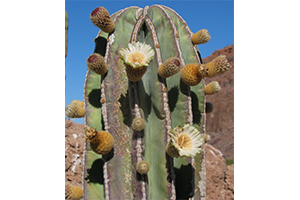Photo Credit: Richard Bonnett via Flickr. Creative Commons Attribution 2.0 Generic (CC BY 2.0) License; https://creativecommons.org/licenses/by/2.0/.
Pachycereus pringlei
Common Name: Mexican giant cactus
Other Common Names: cardon
Plant Functional Group: Cactus
Class > Order > Family: Magnoliopsida > Caryophyllales > Cactaceae
